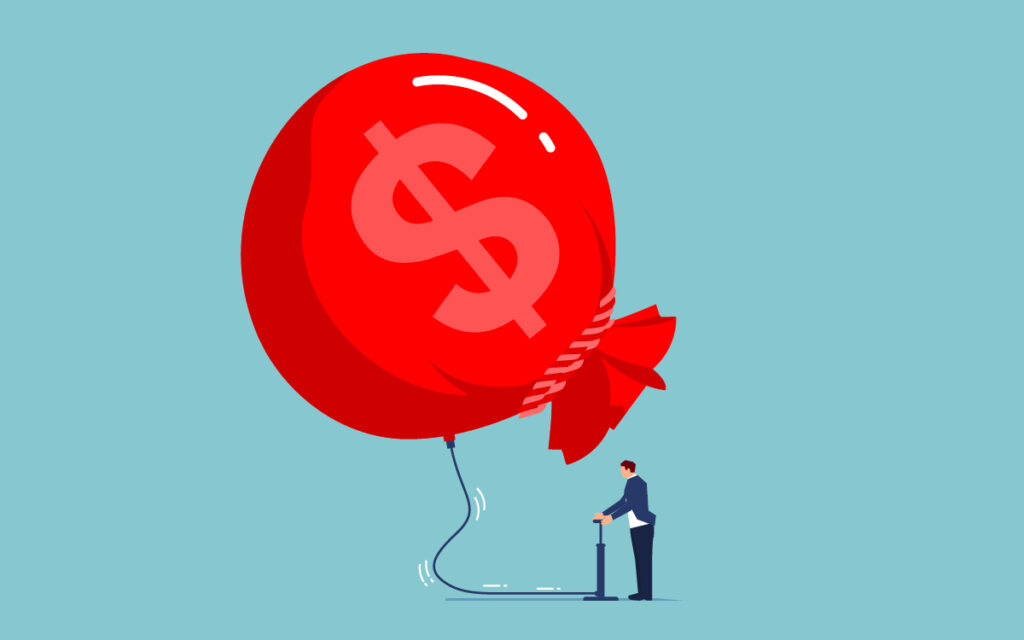Inflation may be here to stay

By Catherine Smith
Inflation hasn’t gone unnoticed by shoppers and business owners throughout Utah, the nation, and the
world, but opinions vary about the cause or who’s to blame.
Hikes in dairy prices have been especially noticed by Westley Bitters, who shops primarily at Walmart,
Smith’s and Macy’s in Cache Valley. “The only thing that I really found surprising was the cost of milk
and cottage cheese,” he said. “Those are my two main products, and they really went up.”
He has found ways to work around the extra cost. “Being retired, I’m on a fixed salary. I already watch
what I buy and I went generic instead of name brand, and that’s easily made up the difference. Except
on dairy products. You can’t go generic on dairy products.”
Bitters doesn’t blame politicians. “Everybody says it’s the Democrats, Republicans. As I’ve analyzed that,
it’s happened to Democrats, it’s happened to Republicans, so I really don’t think it’s that. I think it’s
other factors such as COVID and disasters.”
Inflation, exacerbated by the war in Ukraine, also impacts younger people who no longer have their
parents around to pay. “I definitely have noticed that eggs are more expensive,” said Sam Wallace, a
Utah State University student in Logan who shops primarily at Walmart, Smith’s and WinCo. “I don’t
remember how much they used to be, but the other day one of my roommates went to go and get like
an 18-pack of eggs, and it was almost four bucks. which is bonkers.”
Wallace hasn’t made significant changes in her shopping routine. “I’ve got a system and it works okay,
so I haven’t stressed too much about it. I’m going to be honest, I don’t pay that much attention to
economics. Maybe it’s related to the stimulus checks. Maybe it’s related to goods being harder to come
by. I don’t know,” she said.
Small business owners have likewise felt the brunt. Jerin and Jerica Anderson are co-owners of Anderson Signature Homes in Providence, Utah. Jerin has had difficulty finding materials and furnishings for homes being built. Almost everything has gone up at least 30%.
“It used to be I just came to work and worked,” he said. “Now I probably spend a third of my time just
trying to source the materials.”
Jerin Anderson said he used to pick up his supplies the day before he needed them. “Now I have to wait
three months at least. Yeah, it’s a huge change from last year just trying to get materials for the job.”
He does blame the government. “It has to do with regulations and paying people to stay at home, and
sending people checks throughout the year… all my suppliers say that it’s because they can’t get
workers together. So all the factories, even the shop in Logan that makes our doors, they just can’t get
people.
“It’s hard when we work hard every day to not see how we are affected by all the people who are not
working,” he said.
Lee’s Marketplace, a family-owned grocery store chain in Cache Valley, is no stranger to inflation.
“We’re seeing price increases pretty much across every category and nearly every item,” said Jarad
McDonald, who has worked with Lee’s for more than 30 years and was Chief Operations Officer for five
years. “Some of the biggest increases we’re seeing are in the meat department, specifically beef. We’ve
seen increases anywhere from 12% to 20%, which is really a huge increase”
Annual food inflation for the last several years has been about 2%, McDonald said. “So to start seeing
double-digit increases in your cost of goods and seeing that repetitively over the course of every quarter
and throughout the year, it’s very concerning.”
Food prices are not the only cause for concern. “Packaging is a big deal,” and the shortage has forced
manufacturers to reduce the variety of the items they supply and distribute to almost all grocers.
McDonald said.
For the past year the store has been able to get only four varieties of Gatorade, because Gatorade
focuses on it’s four most popular flavors. People ate more at home, which increased demand for frozen
foods. People went out to eat less, but still wanted convenience, he said.
Grocers are at the tail end of the supply chain where transportation surcharges are passed along.
Consumers don’t see that inflation until they check out. “Sometimes the retailer gets to be the bad guy
at the end of that whole process,” McDonald said. “A lot of times the retailer isn’t making any more
money. The retailer takes a hit on their margins just to stay competitive,” and are “apprehensive about
passing on huge price increases to our guests.”
Pre-pandemic, Associated Food orders were filled about 97%-98% of the time. That has plunged to
35%-40%.
“Over the course of time, there’s always a little bit of inflation,” McDonald said. “Some of our stuff
comes over from China in those big shipping containers. It used to cost these guys about $2,500 to ship
an entire container of product over to America. People are now spending anywhere between $25,000
and $30,000 to ship that same container.”
He thought the problem might be transitory, as many economists had predicted. Inflation now looks
more ingrained.




